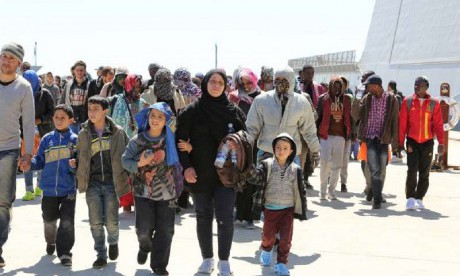The United Nations has released a 2015 update on the state of the world’s migration stock – those who have left the land of their birth to work and live overseas (usually as economic migrants, but also as refugees).
The results have been reproduced in a number of interesting and colourful graphs and infographics (as well as some less colourful and interesting spreadsheets). Some of the more interesting numbers are as follows:
There are 244 million international migrants in 2015. In 2000 there were 173 million. (This represents an increase of 41% over that time which gives an indication of our growing interconnectedness and globailisation.)
International migrants are generally older and more masculine than the world population. The median age of these migrants is 39 years old (the world’s is about 30 years). They are 48% female (50% for the world).
Around a third of these migrants live in Europe, another third in Asia and a quarter in North America.
By far and away the most popular country for migrants to head to is the USA. It has been in this position since at least 1990 and is home to 46.6 million internation migrants (one-fifth of the world’s total).
The countries that are the next most popular destinations of international migrants after the USA are, in order: Germany (with 12 million); the Russian Federation (11.6 million); Saudi Arabia (10.2 million); the United Kingdom (8.2 million); and the UAE which has shot up the rankings with 8.1 million.
The biggest surprise on that list might be Saudi Arabia – international migrants make up a third of its resident population!
On the flip side, the country with the largest number of their citizens-at-birth who have left and live somewhere else is now India with 15.6 million of its citizens living elsewhere.
The other countries topping the list with the largest diaspora are, in order: Mexico (12.3 million); the Russian Federation (10.6 million); China (9.5 million); Bangladesh (7.2 million); and Pakistan (5.2 million). Continue reading
Sources
- This article was published by Marcus Roberts and MercatorNet.com
- Image: UN News Centre
